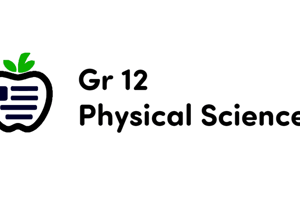Podcast
Questions and Answers
A block of ice with a mass of 5 kg slides down a frictionless ramp from a height of 10 meters. Calculate its velocity at the bottom of the ramp. (Assume $g = 9.8 m/s^2$)
A block of ice with a mass of 5 kg slides down a frictionless ramp from a height of 10 meters. Calculate its velocity at the bottom of the ramp. (Assume $g = 9.8 m/s^2$)
- 98 m/s
- 14 m/s (correct)
- 9.9 m/s
- 49 m/s
If the total mechanical energy of a system is conserved, non-conservative forces like friction are the only forces doing work.
If the total mechanical energy of a system is conserved, non-conservative forces like friction are the only forces doing work.
False (B)
A 2 kg block is pushed across a horizontal surface with a force of 10 N over a distance of 3 meters. If the coefficient of kinetic friction is 0.2, determine the total work done on the block.
A 2 kg block is pushed across a horizontal surface with a force of 10 N over a distance of 3 meters. If the coefficient of kinetic friction is 0.2, determine the total work done on the block.
24.23 J
Power is the rate at which work is done or energy is ______.
Power is the rate at which work is done or energy is ______.
Match the formula with the type of energy or quantity it calculates:
Match the formula with the type of energy or quantity it calculates:
A box is pushed with a force of 50 N over a distance of 10 meters. If the force is applied at an angle of 30 degrees to the direction of motion, how much work is done?
A box is pushed with a force of 50 N over a distance of 10 meters. If the force is applied at an angle of 30 degrees to the direction of motion, how much work is done?
According to the principle of conservation of energy, the total energy in an open system remains constant.
According to the principle of conservation of energy, the total energy in an open system remains constant.
What is the SI unit for measuring energy, work, and potential energy?
What is the SI unit for measuring energy, work, and potential energy?
Energy is the capacity to do ______.
Energy is the capacity to do ______.
Which of the following examples represents kinetic energy?
Which of the following examples represents kinetic energy?
How does doubling the velocity of an object affect its kinetic energy, assuming mass remains constant?
How does doubling the velocity of an object affect its kinetic energy, assuming mass remains constant?
Match the type of Energy with the correct equation:
Match the type of Energy with the correct equation:
A spring with a spring constant of 100 N/m is compressed by 0.2 meters. What is the elastic potential energy stored in the spring?
A spring with a spring constant of 100 N/m is compressed by 0.2 meters. What is the elastic potential energy stored in the spring?
Flashcards
Physical Science
Physical Science
Study of non-living systems, like physics, chemistry, geology, and astronomy.
Energy
Energy
The capacity to do work; measured in joules (J).
Work
Work
When a force causes an object to move a certain distance. W = Fd cosθ
Kinetic Energy
Kinetic Energy
Signup and view all the flashcards
Potential Energy
Potential Energy
Signup and view all the flashcards
Gravitational Potential Energy
Gravitational Potential Energy
Signup and view all the flashcards
Elastic Potential Energy
Elastic Potential Energy
Signup and view all the flashcards
Conservation of Energy
Conservation of Energy
Signup and view all the flashcards
Conservation of Mechanical Energy
Conservation of Mechanical Energy
Signup and view all the flashcards
Power
Power
Signup and view all the flashcards
Work Formula
Work Formula
Signup and view all the flashcards
Study Notes
- Physical science involves studying non-living systems; this includes physics, chemistry, geology, and astronomy.
- It explores the fundamental laws and principles governing the universe and matter
Energy
- Energy refers to the capacity to do work.
- Energy exists in various forms, including kinetic, potential, thermal, electrical, chemical, nuclear, and radiant.
- The SI unit of energy is the joule (J).
Work
- Work occurs when a force causes an object's displacement.
- Work is calculated by multiplying the force component in the direction of displacement by the displacement's magnitude.
- To calculate work, use the formula: W = Fd cosθ, where W represents work, F is the force magnitude, d is the displacement magnitude, and θ is the angle between the force and displacement vectors.
- The SI unit for work is the joule (J), which is equivalent to a newton-meter (N⋅m).
- Work is a scalar quantity, possessing magnitude but lacking direction.
- Work can be positive when force and displacement align, negative when they oppose, or zero if there's no displacement or force perpendicular to displacement.
Kinetic Energy
- Kinetic energy is the energy an object has due to its motion.
- Kinetic energy is calculated with the formula: KE = (½)mv², where KE is kinetic energy, m is mass, and v is velocity.
- The SI unit of kinetic energy is the joule (J).
- Kinetic energy is a scalar quantity.
Potential Energy
- Potential energy represents the energy stored in an object based on its position or condition.
- Gravitational potential energy is the energy an object possesses due to its height relative to a reference point, calculated as: PE = mgh, where PE is potential energy, m is mass, g is the acceleration from gravity, and h is the height.
- Elastic potential energy is the energy stored in a deformed elastic object, like a spring, and is calculated as: PE = (½)kx², where PE is potential energy, k is the spring constant, and x is the displacement from the equilibrium position.
- The SI unit of potential energy is the joule (J).
- Potential energy is a scalar quantity.
Conservation of Energy
- The principle of conservation of energy states that energy cannot be created or destroyed, only transformed or transferred.
- In a closed system, the total energy remains constant.
- The total mechanical energy (sum of kinetic and potential energy) in a system is conserved if only conservative forces (e.g., gravity, elastic force) are doing work.
Power
- Power measures the rate at which work is done or energy is transferred.
- Power is the amount of work done or energy transferred per unit of time and is expressed as: P = W/t or P = E/t, where P is power, W is work, E is energy, and t is time.
- The SI unit of power is the watt (W), equivalent to one joule per second (J/s).
- Power is a scalar quantity.
- Power can also be expressed as the product of force and velocity: P = Fv cosθ, where F is the force, v is the velocity, and θ is the angle between the force and velocity vectors.
Equations
- Work: W = Fd cosθ
- Kinetic Energy: KE = (½)mv²
- Gravitational Potential Energy: PE = mgh
- Elastic Potential Energy: PE = (½)kx²
- Power: P = W/t = E/t = Fv cosθ
Math
- Algebra is essential in physical science for equation manipulation and solving unknown variables.
- Trigonometry is used to analyze forces and motion in two dimensions, particularly when dealing with angles.
- Calculus is used in more advanced topics to analyze continuously changing quantities, such as velocity and acceleration.
Studying That Suits You
Use AI to generate personalized quizzes and flashcards to suit your learning preferences.




